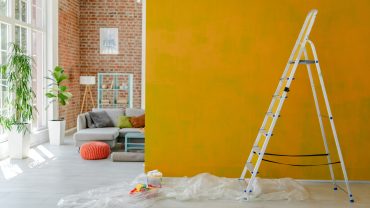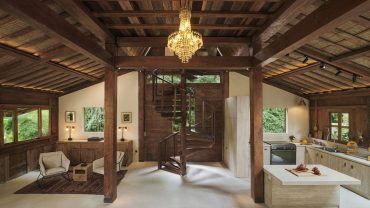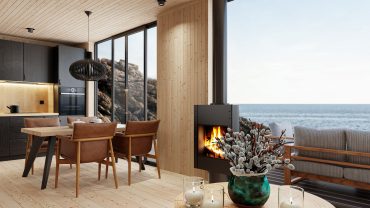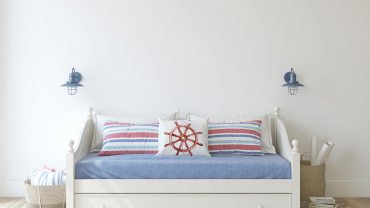We all want our homes to look and feel their best – but even the most stylish spaces can have little quirks that throw things off. Maybe the rug’s a bit too small, the lighting’s too harsh, or the furniture feels a bit cramped. These interior decorating mistakes are easy to make, and easier still to overlook when you live with them every day.
The good news? You don’t need to start from scratch or spend a fortune on a full redesign to put things right. With a few clever tweaks and an eye for detail, you can turn the slip-ups into successes!
From lazy layouts to colour catastrophes, here are eight of the most common interior design mistakes and the smart, stylish solutions that will transform your home.
It’s time to sweep away those bad habits and polish your style.
1. Not Having a Clear Vision or Plan
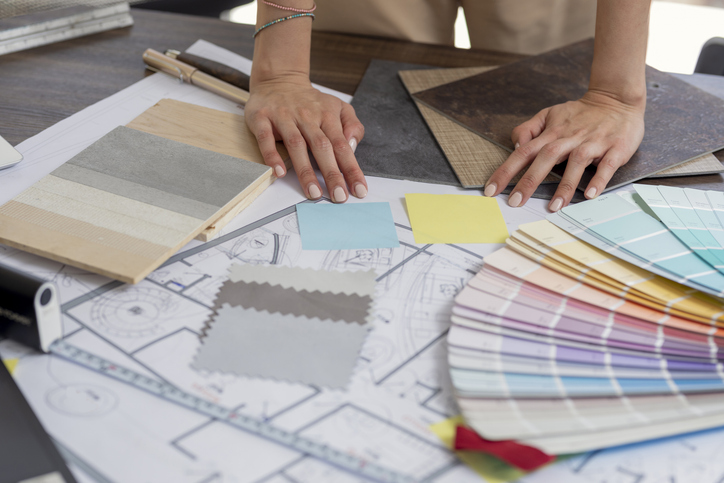
Start with a clear plan... (Credit: Edgar Barragan Juarez via Getty Images)
Jumping into decorating a space without a clear vision or strategy is probably the most common of all interior decorating mistakes, and often leads to a disjointed, haphazard look. Many people get swept up in impulse buys and piecemeal updates, only to find their room feels incoherent or unfinished. Without a guiding plan – like a mood board or a sketch – key elements might clash, essential functions get overlooked, and the end result is more chaotic than cohesive, costing time, money, and creative energy.
The Fix
Start with a clear vision. Gather inspiration – whether from your favourite magazines, websites, or even other people’s homes – and identify a consistent theme, colour palette, and mood. Sketch out a rough floor plan, decide what function each space serves, and build in flexibility for future changes. By making big decisions first (style, colour, layout), you’ll find it easier to shop smart and steer clear of unnecessary – and sometimes expensive – detours. A thoughtful plan lays a strong, stylish foundation for everything that follows.
2. Getting the Scale Wrong

Aim for scale and balance with your furniture (Credit: imaginima via Getty Images)
One of the things a lot of people get wrong is choosing furniture or décor that’s the wrong size for their space – think oversized or sectional sofas crammed into small rooms or dainty pieces floating awkwardly in large, open areas. Poor scale disrupts balance, making rooms feel cramped or empty. Ignoring measurements or failing to consider proportions is one of the interior design mistakes a lot of people make, and it can leave even beautiful pieces looking out of place, and undermine the overall flow and comfort of a room.
The Fix
Measure your space and key furnishings before buying anything. Aim for balance: anchor a large room with substantial pieces, and use smaller-scale furniture for compact spaces. Leave enough breathing room for walkways and sightlines. When mixing sizes, layer smaller accents with larger pieces to add depth and interest. Visualise your layout by taping out key items on the floor, ensuring everything fits harmoniously with the room feeling inviting without being overcrowded or sparse.
3. Trying to Mix Too Many Styles

Interior design (Credit: Vostok via Getty Images)
Mixing styles can add personality, but throwing together too many divergent elements creates confusion and a lack of harmony. A room with ultra-modern chairs, rustic tables, bohemian textiles, and ornate antiques risks feeling like a showroom mishmash. Without discipline, bold choices fight for attention rather than complement each other, and the space loses cohesion and that feeling of flow that makes interiors feel intentional.
The Fix
You can remedy this interior design mistake by blending styles with a balanced approach. Use the 70/30 rule which dedicates about 70% of the room to your dominant style and let the remaining 30% showcase contrasting elements for depth and character. Maintain cohesion with a consistent colour palette, repeating shapes, or textures. Choose an anchor piece which sets the tone, and bring in other styles as accents or accessories.
4. Lighting as an Afterthought
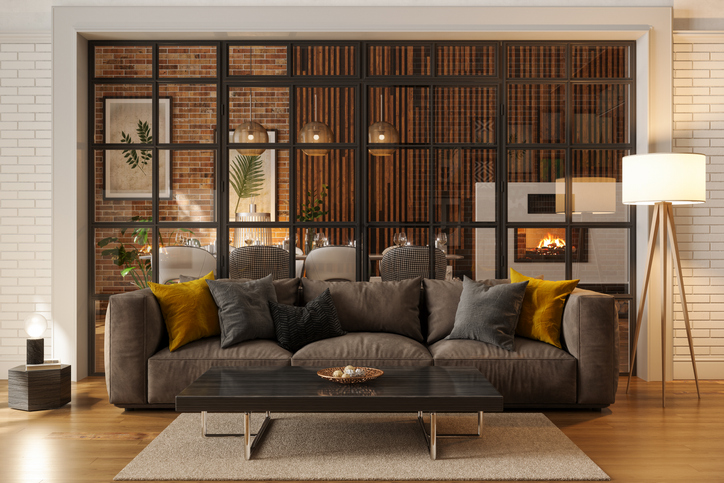
Layered lighting should be worked into your design plan at the early stages (Credit: onurdongel via Getty Images)
Treating lighting as a late addition – or relying entirely on overhead fixtures – can leave rooms feeling flat, gloomy, or uninviting. Many people underestimate the transformative power of layered lighting, resulting in spaces that lack warmth, atmosphere, or functionality. Bad lighting can distort colours, create harsh shadows, or make tasks uncomfortable, undermining even the best design efforts.
The Fix
Luckily, it’s one of the interior decorating mistakes that has an easy solution. Prioritise lighting from the beginning of your design plan. Layer three types – ambient (overhead), task (reading lamps, under-cabinet), and accent (wall sconces, candles). Use dimmer switches and a mix of sources at different levels to control mood and highlight features. Select bulbs with the right warmth for each zone. Good lighting can showcase your décor, boost comfort, and completely change how you experience each space, elevating both style and practicality.
5. Too Much (Or Too Little) Clutter
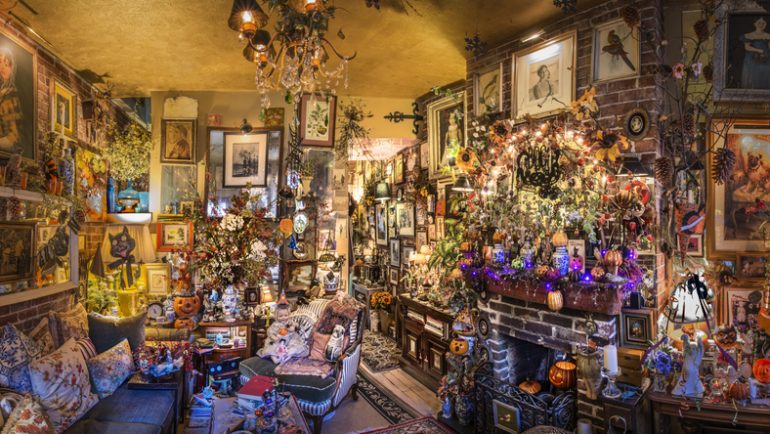
Too much clutter can overwhelm... (Credit: Ed Freeman via Getty Images)
This is one of those interior design mistakes that’s less of a straightforward error and more about nuance. A room overwhelmed by clutter feels chaotic and stressful, distracting from beauty and function. Conversely, going too far in pursuit of minimalism can leave spaces feeling cold, empty, and unwelcoming. Finding the right balance between interest and order is difficult – too many knick-knacks or not enough personality both detract from a room’s atmosphere and usability.
The Fix
Edit and curate your bits and bobs. Keep only what you love and need, then display items in tidy, intentional groupings – odd numbers seem to work best. Use storage solutions (baskets, trays, shelves) to contain everyday items and control visual noise. For minimalist spaces, add a few well-chosen pieces, like plants, art, or textiles, to inject warmth and life. The goal is a space that’s visually interesting but still calm, comfortable, and easy to maintain.
6. Hanging Curtains Too Low
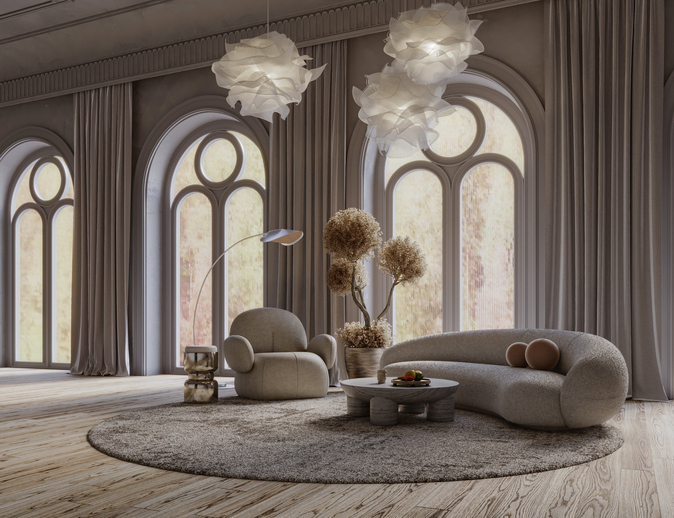
Curtains should be hung close to the ceiling (Credit: Vasyl Cheipesh via Getty Images)
Curtains hung just above the window frame (or too narrow for the width) visually shrink a room and make ceilings appear lower. This common oversight results in windows feeling cramped and awkward, limiting the amount of natural light and making the whole space look less polished. The wrong curtain placement (one of the most often seen interior decorating mistakes) undermines one of the simplest ways to enhance a room’s sense of scale and elegance.
The Fix
Hang curtain rods as close to the ceiling as possible – typically 10cm to 15cm above the frame – and extend them horizontally well beyond the window’s edges. This approach elongates walls and frames your windows to their full advantage, maximising light and making the room feel grander and more open. Use floor-length panels for the most refined effect. The right curtains can totally transform a space, adding drama and sophistication with little effort.
7. Badly Hung or Poorly Positioned Art
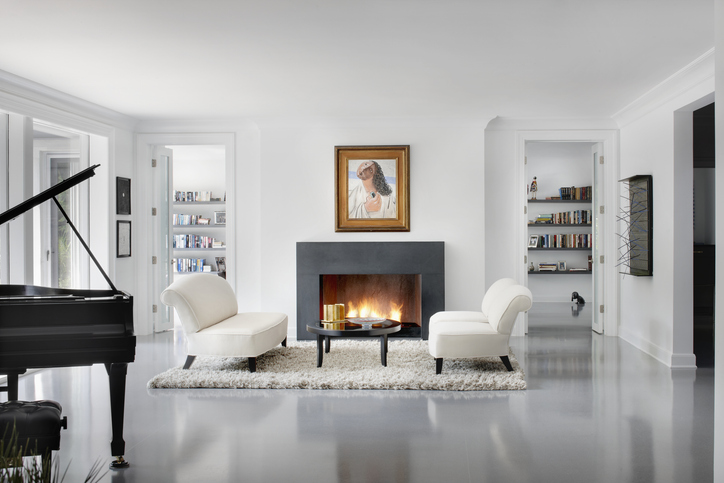
Position your artwork for maximum impact (Credit: Michael Robinson via Getty Images)
Artwork hung too high, too low, or oddly spaced can throw off a room’s proportions and disrupt the viewer’s focus. Many people neglect scale – choosing art that’s too small for a large wall, or clustering pieces unevenly, and it’s one of the more frequent interior design mistakes people make. The result is décor which can feel accidental rather than intentional, and beautiful pieces can go unnoticed or underappreciated.
The Fix
For the most natural viewing position, hang artwork so that its centre is around 145 cm from the floor. When grouping artwork, treat the arrangement as a single unit and keep spaces between frames consistent. Choose pieces proportionate to the wall or anchor large works above key furniture. Use paper templates or tape outlines before fixing anything to the wall, allowing you to adjust placement for maximum impact and harmony.
8. Lack of a Focal Point

A rustic inglenook fireplaced is a guaranteed focal point! (Credit: Matthew J Thomas via Getty Images)
Rooms without a clear focal point can feel aimless and forgettable. Whether it’s a statement rug, striking fireplace, bold artwork, or a dramatic piece of furniture, every space can benefit from a visual anchor. Without one, the eye doesn’t know where to rest, leaving the space feeling scattered and the design incomplete.
The Fix
It’s a commonplace interior decorating mistake but one that’s straightforward to remedy. Select one dominant feature to act as your room’s anchor – a statement light fixture, colourful rug, or beautiful mantelpiece. Arrange major furniture pieces to draw attention to this focal point and build the rest of your décor to support it. Use colour, contrast, or interesting textures to highlight the area. A well-chosen focal point can instantly bring cohesion and invites guests to settle in and appreciate the room’s best features.
From Faux Pas to Fabulous
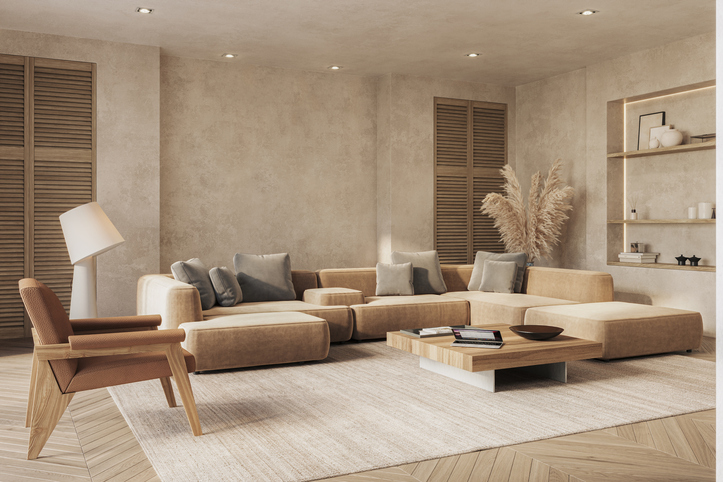
Mistake to magnificent! (Credit: Vasyl Cheipesh via Getty Images)
A few small changes can make all the difference between a room that feels almost right and one that truly shines. By spotting and fixing these common interior design mistakes, you’ll create spaces which are balanced, stylish, and full of personality. So go on – banish the faux pas, embrace the fabulous, and let your home’s true potential take centre stage.




